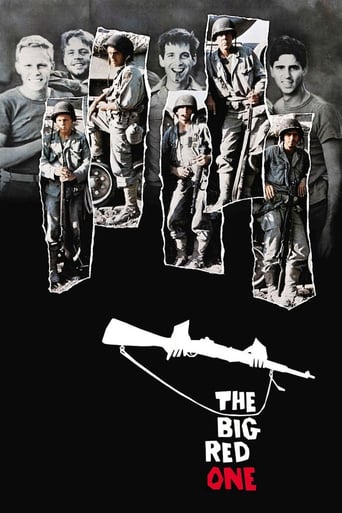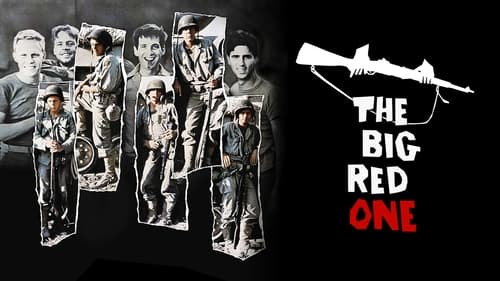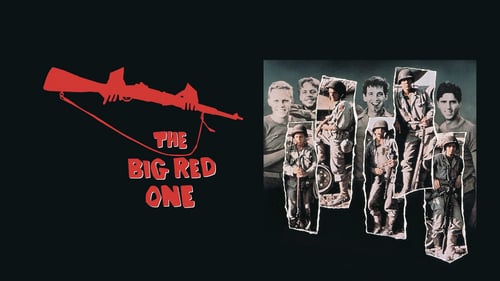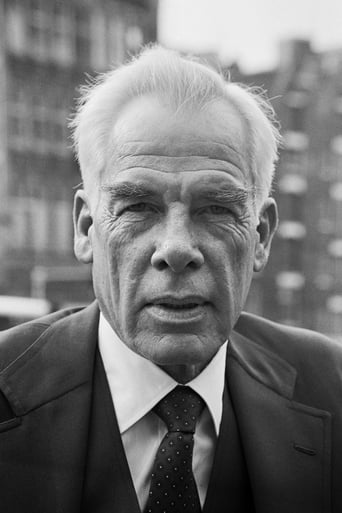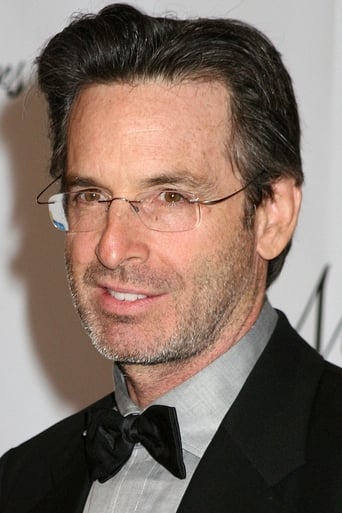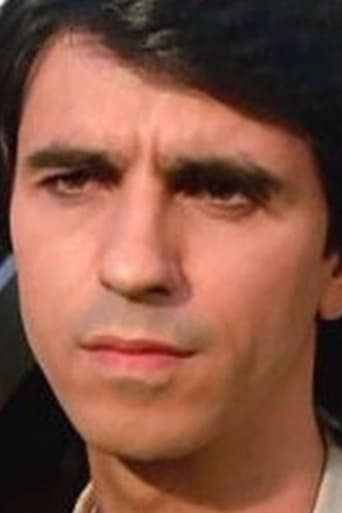BootDigest
Such a frustrating disappointment
Marketic
It's no definitive masterpiece but it's damn close.
Livestonth
I am only giving this movie a 1 for the great cast, though I can't imagine what any of them were thinking. This movie was horrible
Married Baby
Just intense enough to provide a much-needed diversion, just lightweight enough to make you forget about it soon after it’s over. It’s not exactly “good,” per se, but it does what it sets out to do in terms of putting us on edge, which makes it … successful?
andrewfldn
This was a disappointing film for me. It didn't really engage me at all. For a rather long film, I would have expected a little more character development and background story exploration, but we never really learn much about them. In fact I couldn't tell you the names of the main characters, which says a lot about how much the film held my interest.In terms of the filming style, it is rather disjointed, with the action switching between various locations, and from one explosion to the next. At one point we have a ridiculous isolated scene where 3 of the soldiers are delivering a baby in a tank. Who is this woman? We don't know, never find out, and she's never seen again.I can't even recommend the acting quality, with some peripheral characters being extremely wooden, and a little painful to 'see' them acting. The ending scene at Auschwitz is woefully unconvincing, and Hamil is clearly out of his depth.Annoyingly too, the music at points was inappropriate in its style. Normally a good film soundtrack is quite unobtrusive, yet adds to the atmosphere of the film. Yet with this one, the style was sometimes glaringly irritating to me, and not really in keeping with the mood of the film.For a 2 hour 40 minute film, I expected more. I know it's an older film, and it sure looks like it. This falls way below the standard of films like 'Saving Private Ryan' and even the TV series 'Band Of Brothers', which were both much more enjoyable, engaging and convincing.
Joseph Pezzuto
"I can't murder anybody." "We don't murder; we kill." 'The Big Red One' (1980), was made particularly in order to show people what the 1st Infantry Division entering WWII were truly like and how ordinary men fought, bled, and died for our great nation throughout the many hellish war zones and situations some narrowly survived for a few fatal years. The director, Samuel Fuller (Pickup on South Street, Shock Corridor), known for his low-budget genre movies with controversial themes, here wanted to capture the true essence of what these ordinary men had to do to survive extraordinary circumstances: the German artillery, D-Day on Omaha Beach in Normandy, a massive counterattack resulting in what became known as the Battle of the Bulge and other famous historical battles. Dodging gunfire and clinging to survival amidst dangerous war zones therein this gritty, gripping war flick, 'Big Red' is a loosely constructed epic account for reconstructing his Fuller's own days in Europe and North Africa between the years 1942 and 1945, displaying both raw power and a rough edge, all the while maintaining a cool and personal perspective that echoes his war-torn trials as they bleed from various moments throughout the picture as we sit there and witness it. So, did Fuller's version of what he personally experienced during the war truly capture the essence of it? Let's take a look.In October 1918, the patch as it is known, a red "1" on a solid olive green background, was officially approved for wear by members of the Division. Worn with pride, the patch symbolizes the legacy and tradition that binds all generations of those who have worn the Big Red One. On August 1, 1942, the first Division was recognized and redesignated as the 1st Infantry Division. The 1st Infantry Division entered combat in World War II as part of "Operation Torch", the invasion of North Africa, the first American campaign against the Axis powers that marched and combated through Algiers, Tunisia, Sicily, France, Belgium and then pushed into the German border. The Division continued its push into Germany, crossing the Rhine River. On December 16, twenty-four enemy divisions, ten of which were armored, launched a massive counterattack in the Ardennes sector, resulting in what became known as the Battle of the Bulge. The Big Red One held the critical shoulder of the "Bulge" at Bullingen, destroying hundreds of German tanks in the process. On Easter Sunday, April 1, 1945, the Division marched one-hundred fifty miles to the east of Siegen. On April 8, the Division crossed the Weser River into Czechoslovakia. The war was over May 8, 1945. Tragically at the end of WWII, there were over twenty-thousand casualties and over one hundred thousand prisoners of war had been taken. Forty-three thousand plus men had served in the ranks, winning a total of twenty-thousand plus medals and awards, including sixteen Congressional Medals of Honor. Nonetheless, the actors on the screen reflected just a glimpse of how the real soldiers back in the day fought for our great nation to the fullest extent. One of the main characters, Pvt. Griff (Mark Hamill), causes to violate his pacifist views because even amidst the chaos and utter destruction around him, he does not believe in and refuses to "murder". He values life to the fullest extent. He lives in believing and even states that the true glory of war is actually surviving it. Griff's position in the infantry is a marksman, and a skilled one at that. Nonetheless, the horrors of his war years have finally caught up with him. He is finally stripped of his pacifist views in one scene as he fires every one of his last bullets into a lone German hiding in one of the ovens in a concentration camp used to exterminate the Jews. His face contorting into agony and despair as he does so, it is revealed to him and to the audience that WWII had finally wreaked a psychological toll on Griff, regardless of his heroism and bravery for his country. The horrors of war have finally gripped him into a reality where his pacifist views have come to a grinding halt in his mentality, knowing that his aspects will never again be the same from here on out.I do believe there is a difference between killing and murder. Even though The Sergeant (Lee Marvin) explained the difference in the beginning of the film, I had to agree with what he said. However, my thoughts on the certain matter is that killing is what you have to do in war or in dangerous life-threatening situations where you have to shoot the enemy in order to defend and protect something big or meaningful, their case being the United States and the people of America. Murder has no rational thought, such as randomly stabbing someone with a knife for example. Some people murder only to save themselves or if they are convicted criminals, not for something heroic like fighting for their homeland or for victory. The plot was all about surviving WWII, along with the many horrors that encompassed it as well. This was a wonderful picture altogether, with a glorious display of historical battles given as torn pages from a found war journal for us to relive, recount and remember.
Thomas Lord
I really have no idea why this film is so highly rated, I think it must be down to reviewers nostalgia from seeing it as a child. The attention to detail is awful; I understand that it was probably not possible to source authentic equipment in 1980 and obviously there was no CGI but really, is it too much to ask not to have 1980's hairstyles , modern Israeli(Oh the irony!) tank drivers with modern helmets and Germans shouting "Americaner schweinhund!". I've tried to watch it three times now, and I'm sure a modern re telling would do a much better job.It's clearly a fascinating story but this version doesn't make it so.
tieman64
"In cinema's presumption, in its pretension to being the real - which is the craziest of undertakings - no culture has ever had toward its signs such a naive, paranoid and terrorist vision." - BaudrillardThere are only five or six types of war films, the most common being "the Platoon movie". Traditional this sub-genre contains three basic elements: hero, group, and objective. The group is made up of a mixture of ethnic types, most commonly including an Italian, a Jew, a cynical complainer from Brooklyn, a sharpshooter from the mountains, a Midwesterner (nicknamed by his state, "Iowa" or "Dakota" for example), and a character who must be initiated in some way (a newcomer without battle experience) and/or who will provide a commentary or "explanation" on the action as it occurs (a newspaperman, a letter writer, an author, a professor). As the group moves forward, action unfolds in a series of contrasting episodes that alternate in uneven patterns: night and day, safety and danger, action and relaxation, dialogue and non-dialogue, comedy and tragedy, good weather and bad weather, combat and non-combat, and so on. Military iconography is used and explained, conflicts break out within the group (in which the objective, leadership and war itself is questioned), rituals from home are discussed and remembered and new combat rituals are enacted. As the group advances, they encounter the enemy and certain members die. A final climactic battle, often a last stand referred to as an "Alamo", takes place at a bridge or in a town, and reveals the film's overall purpose. The hero or narrator, who has usually had the objective forced on him, then has to make a series of difficult (and unpopular) decisions. He sometimes survives (although most of his men don't), and he sometimes dies. These films were common in the 40s and 50s, and rarely deviated from this formula. The genre remained silent for a number of years, thanks mostly to the Vietnam war, before two films reactivated it briefly in the 80s and 90s: Sam Fuller's "Big Red One" and Steven Spielberg's "Saving Private Ryan".Fuller's film, which eschews realism at times for a more metaphysical outlook, and which revokes corny moralising in favour for stoic silence, has been criticised by some for being "fake". Filmed on a minuscule budget (1/25th the budget of "Private Ryan") and without the benefits of modern technology, viewers dismiss it as a "dated movie". But with repeated viewings (and an extended cut released recently) the film reveals a maturity, an immediacy, a sort of no-nonsense authenticity, that most "platoon" films lack. Indeed, of all WW2 platoon movies, from "Bataan" to "Guadalcanal Diary" to "Objective Burma" to "Saving Private Ryan", the trio of "The Big Red One", "Beach Red" and "The Thin Red Line" are arguably the best, not because of their "realism", but because of their metaphysical trimmings. But when people complain that old war films are "not realistic", what do they really mean? When "Bataan" was released (the first film to pull together all the elements that came to define the genre) it was praised for its "gritty realism". Shot entirely on studio sets, viewers and critics were blown away by its extreme violence, its authenticity and the bloody "Alamo" finale in which everyone dies. A violent beheading (which largely occurs off-screen) was deemed particularly shocking, despite the fact that no blood is shown. As time passed and censorship restrictions were loosened, genres of violence (horror, war, gangsters, and westerns) all increased in bloodiness. Sam Peckinpahs "Cross of Iron" and "Platoon" were praised in their day for their gore and realism, but today both seem hopelessly stupid. Likewise "Private Ryan" and "Black Hawk Down", two films praised for "taking it to the next level", today look indistinguishable from next generation hyperreal computer game shooters. In reality it is only technology that progresses, cinema's "understanding of war" regressing into the infantile comfort of movie narratives over 90 years old.And yet with each wave of technological innovations, the latest war films pretend to bring us "closer to the truth of war". When "Private Ryan" was released advertisements proudly proclaimed "Now You Know!", the implication being that after witnessing the film, we now know what combat is like. Hyperrealism has somehow become conflated with truth, when in fact the two are often in complete opposition.The shaky, desaturated looks of "Ryan", "Schindler", "Black Hawk" and "Hurt Locker" are designed to simulate reality, when in fact they mimic archived, documentary or news footage. The intention is thus not to bring us closer to reality, but closer to a mediated hyperreality, an image of an image of an image, regressing further into what Baudrillard calls the simulacra, further and further from any ground zero reality.Coupled with this, these films offer a curious lack of any real insight into the psychology of the soldiers or the nature or politics of warfare. Beyond spectacle, we get offers of heroism and redemption, but little else. It's as though an obsession with rendering the aesthetics of war "real", has pushed past realism into video game simulation and rendered all context and truth void. All that matters is the look and sound of the thing. Surfaces are all you need to know.This, of course, is Baudrillard's description of the 21st century American desert-city. Surface is no longer about the realisation of a thing's essence, about history and truth, but assumes almost the exact opposite meaning. An overemphasis of depth-less surfaces leads to object-hood, rather than art.8/10 - Whilst most war films ("Ryan", "Schindler" etc) exploit the context of war to tell a story of rescue, survival and redemption, the restoration of family and the recuperation of a nation and its history, Fuller has less propagandistic aims. Like his earlier war films, this is pulp journalism, prose before image, his blunt poetry capturing the tone of a Jones or Hemingway.
